Did you know that heating and cooling account for nearly 50% of an average building’s energy usage worldwide? As energy bills and environmental concerns rise, homes and businesses urgently need new ways to cut energy waste . Sustainable HVAC practices are leading the revolution—not only slashing costs but reshaping how we live, work, and care for the planet. This guide breaks down everything you need to make smarter, cleaner, and more cost-effective choices for your HVAC system right now.
Unveiling the Need for Sustainable HVAC Practices: Why Energy Waste Matters
The importance of sustainable HVAC practices goes far beyond simple cost savings. Across residential and commercial sectors, ac systems and hvac systems account for a massive share of global energy consumption. Designed decades ago, many traditional hvac system setups are notorious for their inefficiency, causing unnecessary energy waste and ballooning energy bills while increasing a property’s carbon footprint .
Today’s energy landscape demands a shift toward sustainable practices that address both environmental impact and economic benefits. By implementing sustainable hvac solutions , homes and businesses not only minimize their environmental impact and lower greenhouse gas emissions , but also create healthier, more comfortable indoor air environments. Practical examples include upgrading to energy efficient ac systems , using smart thermostat controls, and integrating renewable energy sources —all helping to drastically reduce energy consumption .

Startling Facts: HVAC Systems’ Role in Global Energy Consumption
Consider this: Commercial and residential hvac systems globally contribute to more than 40% of building-related energy usage . Inefficient heating and cooling can contribute significantly to greenhouse gas emissions , amplifying our collective carbon footprint . According to the U.S. Department of Energy, air conditioner and heating systems can cost the average household more than $1,000 annually—often due to outdated or poorly maintained equipment.
The environmental toll doesn’t stop at higher bills. Inefficient ac systems and lack of sustainable practices strain regional energy grids, especially during heatwaves or cold snaps. This increased energy consumption leads directly to higher emissions, further harming the environment and public health. Recognizing these facts, more property owners are seeking innovative ways to retrofit or update their hvac systems for both their wallet’s and the world’s benefit.
Unlocking the Essentials: Sustainable HVAC Practices Explained
Sustainable HVAC practices are a holistic approach to hvac system design, operation, and maintenance. They focus on maximizing energy efficiency , using cleaner energy sources , and ensuring excellent indoor air quality —all while minimizing environmental impact and operating costs. These strategies adapt to both new constructions and existing properties, ensuring that every building can contribute to a more sustainable future.
Mastering sustainable HVAC practices means rethinking everything from system design to choosing the right hvac solutions and making smart use of technology. Below are the essential skills and benefits you’ll gain from investing in sustainable HVAC solutions.
Understand core principles of sustainable HVAC system design
Learn how sustainable practices slash energy costs and environmental impact
Discover cutting-edge sustainable HVAC solutions
Evaluate sustainable HVAC systems for air quality and comfort
Compare energy sources and smart thermostat integration
Plan for HVAC system upgrades with the latest standards
Comparing Sustainable HVAC System Types and Energy Efficiency | ||||
System Type |
Typical Efficiency |
Ideal Application |
Maintenance Needs |
Renewable Ready |
|---|---|---|---|---|
Variable refrigerant flow |
High |
Commercial buildings |
Moderate |
Yes |
Heat pumps |
Very High |
Residential & Small Biz |
Low |
Yes |
Geothermal systems |
Highest |
Large facilities |
Low |
Yes |
Traditional AC systems |
Moderate |
Older homes |
High |
No |
Comprehensive Overview: How Modern HVAC System Design Drives Sustainable Practices
Modern hvac system design lies at the heart of sustainable HVAC practices. Thoughtful system design addresses factors like building orientation, insulation, and occupancy patterns, all of which influence energy usage and energy efficiency . Today’s sustainable HVAC systems leverage advanced controls, precise zoning, and high-efficiency hvac solutions for both heating and cooling .
Such innovation in hvac systems means spaces remain comfortable with less energy. LED digital controls and programmable thermostats let users set temperatures to match when rooms are occupied, while intelligent zoning directs air only where needed—eliminating waste and improving indoor air conditions. By considering every detail of system design , both new and retrofitted ac systems can deliver sustainable performance and cost savings.
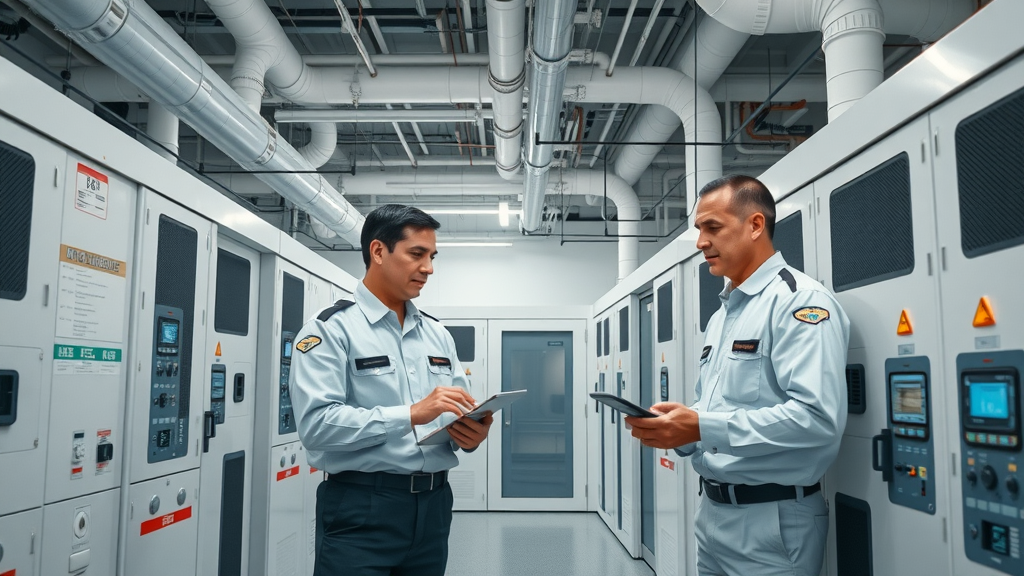
Integrating Sustainable HVAC System Design Principles for Efficiency
To maximize efficiency, sustainable hvac system design begins with a holistic assessment. Building envelope tightness, window placement, and occupant density are matched with right-sized equipment and low-impact ductwork layouts. Variable-speed motors, demand-controlled ventilation, and smart thermostat integration ensure each zone gets only as much heating or cooling as needed—nothing more, nothing less.
Continuous monitoring, energy recovery ventilators, and selection of renewable-ready hvac systems further increase sustainability. As more businesses and homeowners require green certifications, such as LEED or WELL, integrating these sustainable hvac system principles upfront has become standard practice, ensuring both compliance and ongoing operational savings.
Case Study: Making AC Systems and Cooling System Retrofits Sustainable
Retrofitting older ac systems is often more practical than total replacement in many buildings. For example, when a midsize office upgraded its aging cooling system to a modern heat pump and sealed ductwork, it slashed energy consumption by 30% and improved indoor air comfort. By adding smart thermostats and zoning technologies, the site further reduced operational costs by ensuring different areas weren’t unnecessarily cooled after hours.
This real-world transformation proves that enhancing sustainability isn’t just for new construction—simple upgrades, such as energy-efficient fans, smart controls, and improved insulation, can deliver significant benefits. Businesses count not only cost savings but dramatic reductions in greenhouse gas emissions as proof that sustainable hvac solutions are truly worthwhile.
Cutting Edge: Sustainable HVAC Solutions and Smart Thermostat Technologies
Today’s sustainable hvac solutions are defined by their ability to incorporate new technology—especially control systems that learn, adapt, and optimize. One of the most powerful innovations is the smart thermostat , which learns building occupancy and weather patterns, then automatically adjusts to ensure peak energy saving throughout the day.
The combination of sensor data, predictive analytics, and seamless cloud connectivity enables ac systems to maximize comfort without constant human interaction. Homeowners, facilities managers, and business owners can monitor and fine-tune hvac solutions remotely, customizing schedules to capture both energy and cost savings.
Optimizing HVAC Solutions with Smart Thermostat Controls
Integrating a smart thermostat with your hvac system is a key player in sustainable practices . The most advanced devices provide app controls, weather-response features, and adaptive algorithms, ensuring your air conditioning and heating and cooling systems never run more than necessary.
A recent study shows that smart thermostats can cut energy usage for cooling system operations by up to 15%. Features like geofencing can even sense when a building is vacant and automatically revert settings to energy-saving modes, maximizing efficiency around the clock.
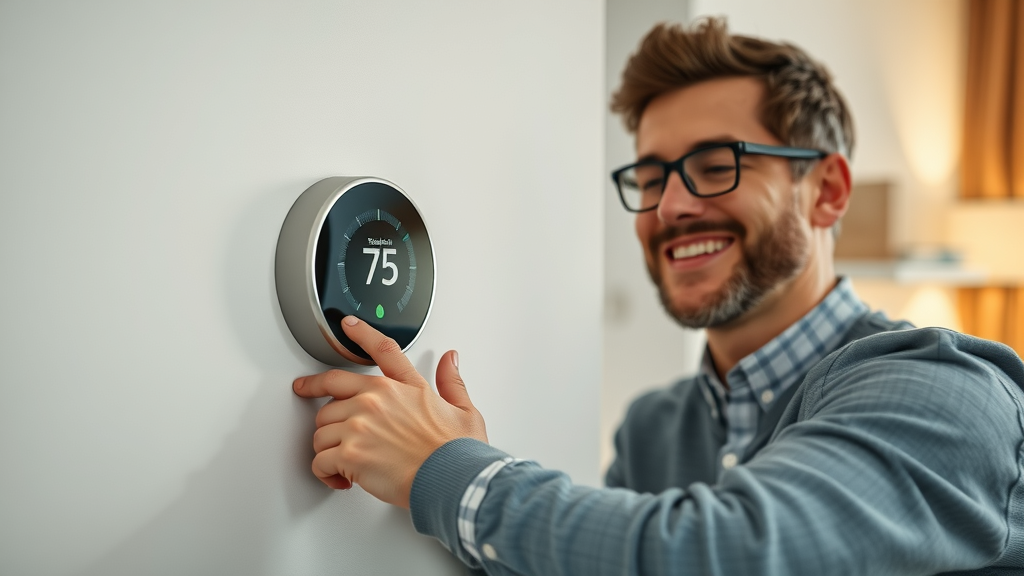
Leveraging IoT and Data Analytics in Sustainable HVAC Systems
The future of sustainable HVAC systems is built on the power of IoT (Internet of Things) and advanced data analytics. Sensors embedded throughout the building provide real-time data on temperature, humidity, occupancy, and air quality. Cloud platforms analyze this information to identify inefficiencies, predict maintenance needs, and recommend energy saving strategies.
This level of insight allows property owners and managers to react instantly to changing conditions, automate schedules, and validate ROI for their hvac solutions . With constant performance feedback, sustainable HVAC systems grow smarter over time—helping buildings become increasingly eco-friendly and comfortable.
Indoor Air Quality and Sustainable HVAC Practices
Critical to any sustainable hvac system is the goal of improving indoor air quality . Beyond just temperature control, modern hvac systems focus on minimizing pollutants and ensuring fresh, clean air. Effective hvac solutions reduce dust, mold, allergens, and volatile organic compounds (VOCs), protecting occupant health in both residential and commercial properties.
With more awareness about airborne pathogens and general wellness, sustainable HVAC practices that emphasize air quality and low energy use are in higher demand than ever. Choosing energy efficient filtration and ventilation, alongside robust monitoring, fosters healthier indoor environments while keeping energy bills low.
Improving Indoor Air Quality with Energy-Efficient HVAC Systems
Energy-efficient hvac systems often utilize high-MERV filters (Minimum Efficiency Reporting Value) and cutting-edge ventilators to boost indoor air quality . These not only trap fine particles but also help reduce carbon footprint by lowering the frequency and intensity of heating and cooling cycles needed to maintain comfort.
Coordinating air exchange rates with occupancy, and balancing ventilation with energy recovery, ensures that buildings are healthier and more sustainable. Property owners enjoy peace of mind, knowing they’re simultaneously safeguarding health and conserving energy.

Boosting Indoor Environment Health by Reducing VOCs and Allergens
Effective sustainable HVAC solutions address indoor pollutants by actively removing VOCs, dust, and allergens from circulated air. Many systems now feature UV-C light technology or ionization, neutralizing harmful microbes without chemical additives.
Maintaining proper humidity levels and regular filter changes also play a vital role in sustaining enviable indoor environment quality. These practices prevent the spread of illnesses, mitigate allergy triggers, and foster a more productive workspace or living area—while helping your hvac system run at maximum efficiency.
Comparing Sustainable HVAC Systems: Energy Sources and Heat Pumps
One of the foundational choices in sustainable HVAC practices is selecting the right energy source . Modern hvac solutions are now designed from the ground up for compatibility with emerging energy technologies—especially heat pumps , solar power, and even geothermal systems.
Heat pumps are an increasingly popular choice for both heating and cooling thanks to their efficiency and ability to draw from renewable or low-carbon energy sources . Combining these technologies with solar panels or geothermal loops makes it possible to heat and cool buildings far more sustainably than traditional fossil-fuel-based systems.
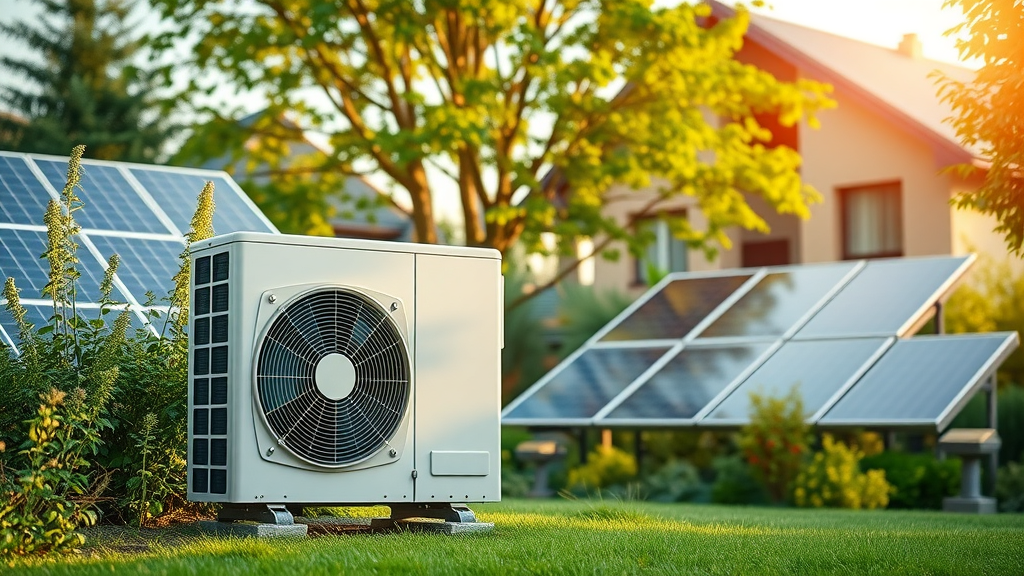
Integrating Renewable Energy Sources with Sustainable HVAC Solutions
Integrating renewable energy sources such as photovoltaic panels or ground-source loops with hvac systems brings substantial sustainability benefits. Hybrid systems, which pair heat pumps with solar arrays, can even operate “off-grid” during peak sunlight hours, dramatically reducing grid energy consumption and greenhouse gas emissions.
Such sustainable hvac solutions empower owners to take control of both their utility bills and their environmental responsibilities—making energy upgrades not just wise but essential for any property with sustainability goals.
Maximizing Efficiency with Modern Heat Pumps and Air Conditioning
Today’s heat pumps are more efficient and versatile than ever, functioning as both heaters and air conditioners . These advanced units deliver impressive energy savings , using up to 50% less electricity compared to older heating and cooling methods.
Paired with modern controls and air conditioning technologies, heat pumps ensure seamless year-round comfort. Their ability to integrate with renewable energy sources further boosts their sustainability profile, providing a practical and long-term solution for existing homes and businesses.
"A truly sustainable HVAC system doesn't just cut costs—it improves our world, one building at a time." – Leading HVAC Sustainability Expert
Best Sustainable HVAC Practices for Every Property
No matter the building’s age or type, adopting these sustainable practices will dramatically reduce energy waste and improve both comfort and air quality . Routine professional maintenance, smart upgrades, and a strategic approach are the foundation of any effective sustainability plan.
Below are the top seven sustainable hvac practices that facility managers and homeowners can implement with immediate effect.
Schedule regular HVAC system maintenance and tune-ups
Seal and insulate ductwork for better energy performance
Upgrade to high-efficiency, ENERGY STAR-certified HVAC systems
Install programmable or smart thermostat devices
Leverage natural ventilation whenever possible
Optimize HVAC system design for building layout and occupancy
Monitor and analyze energy consumption continuously
Retrofitting Older AC Systems: Challenges and Sustainable Solutions
Many buildings still rely on legacy ac systems that are inefficient and costly to maintain. Retrofitting these with modern, sustainable HVAC solutions is one of the biggest opportunities for sustainable upgrades. The process typically includes evaluating existing ductwork, upgrading refrigerants, adding smart controls, and ensuring compatibility with renewable energy options.
While upfront costs can be a barrier, the long-term operational savings and boost in energy efficiency quickly offset initial investments. With professional consultation, even the oldest air conditioning systems can be transformed into to eco-friendly units with greatly reduced carbon footprints .
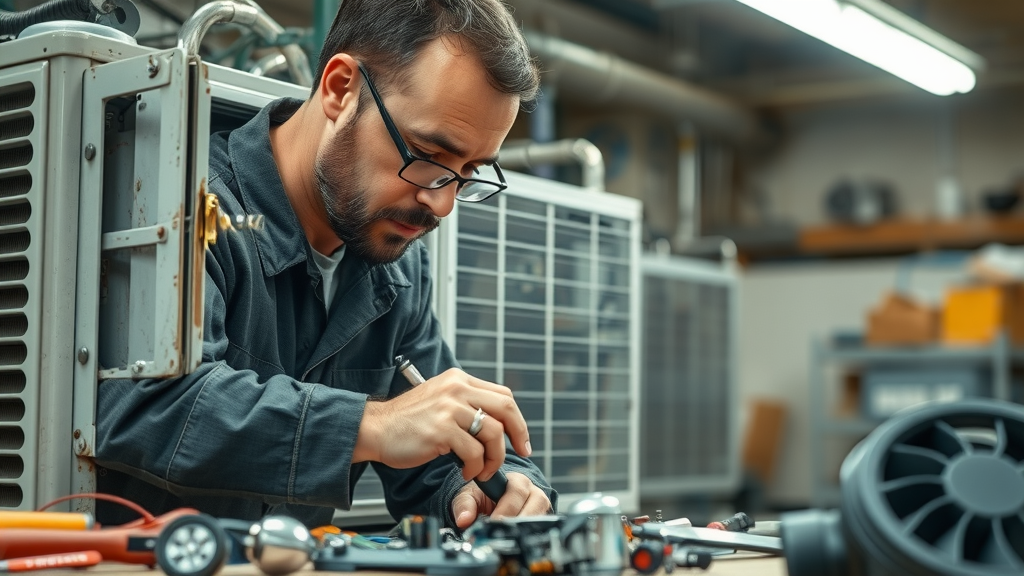
Upgrading to Sustainable HVAC Solutions in Existing Structures
For existing structures, upgrading involves meticulous planning and expert assessments. Professionals determine optimal equipment sizing, necessary ductwork adjustments, and the feasibility of introducing renewable energy sources . Smart thermostats and advanced filtration systems can be incorporated into almost any setup for a significant efficiency and air quality boost.
Carefully staged upgrades reduce disruption for occupants, ensuring comfort is maintained as systems are modernized. Taking a stepwise approach allows property owners to gradually invest in sustainability while benefitting from each improvement along the way.
Overcoming Barriers: Cost, Compatibility, and Regulatory Factors
Key challenges to retrofitting ac systems include budget constraints, space limitations, and adherence to current regulations. Not every older property can easily accept large equipment or high-tech ducting. That’s why expert guidance is crucial—professionals can recommend compatible, compact solutions, balance costs, and navigate rebate or incentive programs.
With government and utility incentives increasingly available for sustainable upgrades, cost barriers are becoming more surmountable. Early consultation and careful staging ensure a smooth transition to a greener, highly compliant hvac system .
Key Measurements: Assessing the Performance of Sustainable HVAC Systems
A truly sustainable hvac system is measured by its performance. Tracking specific metrics such as energy consumption, indoor air quality, and carbon output helps owners identify strengths and areas to improve. Ongoing assessment protects both comfort and investment, guaranteeing that sustainability goals are consistently met.
Adopting these performance measurements is crucial for maintaining long-term benefit. The best systems provide data dashboards, remote monitoring, and regular automated energy audits—making it easier to stay proactive and informed.
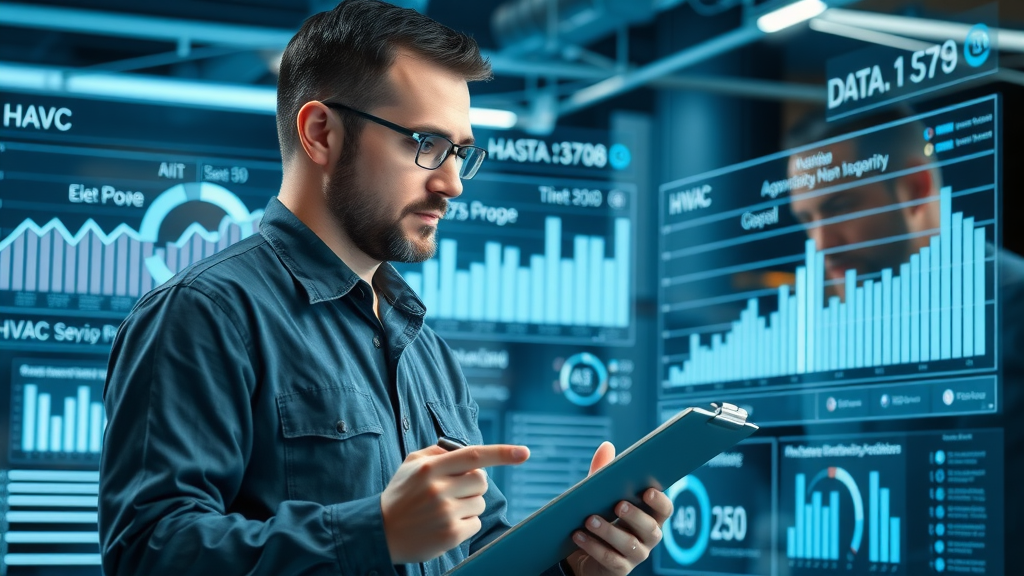
Tracking Energy Efficiency and Indoor Air Quality Metrics
Effective tracking means monitoring performance in real time. Owners and facility managers look for metrics such as Seasonal Energy Efficiency Ratio (SEER), Indoor Environmental Quality (IEQ) score, annual energy use per square meter, and the year-over-year decline in CO2 emissions .
With these benchmarks in hand, decision-makers can quickly spot performance dips, schedule preventive maintenance, and justify further investments in sustainable technologies. Consistent monitoring is key for maintaining optimal results in both newly implemented and retrofitted hvac solutions .
Performance Metrics for Sustainable HVAC | ||
Metric |
Description |
Target Value |
|---|---|---|
SEER Rating |
Seasonal Energy Efficiency Ratio |
14+ |
IEQ Score |
Indoor Environmental Quality |
80+ |
Energy Use |
kWh per square meter annually |
< 50 kWh/m² |
CO2 Emissions |
Annual HVAC-related CO2 output |
Declining YoY |
Real-World Impact: Cost Savings and ESG Benefits from Sustainable HVAC Practices
Switching to sustainable hvac practices brings quantifiable benefits. Lower energy bills , increased asset values, and future-proofed buildings are just the beginning. Companies and homeowners also demonstrate responsible stewardship by supporting environmental, social, and governance (ESG) principles—attracting tenants and buyers with a commitment to sustainability.
Optimizing hvac systems helps businesses qualify for green building certifications, public incentives, and competitive energy rates. With sustainability front and center, every investment returns lasting value for both the bottom line and the broader community.
Calculating ROI: The Financial Case for Sustainable HVAC Solutions
Careful ROI calculations for sustainable hvac solutions reveal payback periods as short as three to five years in many instances. Factoring in energy savings, reduced maintenance, increased asset value, and available rebates, upgrading older ac systems can quickly become self-funding.
For example, properties that switch to high-efficiency heat pumps and smart controls typically see energy cost reductions of 20–40%—translating to thousands in annual savings. Over a system’s lifespan, these savings compound, underscoring why sustainable upgrades are both wise and financially sound.
Understanding ESG and Its Role in HVAC Systems
ESG (Environmental, Social, and Governance) is now a driving force behind property investment decisions. HVAC practices that lower energy consumption , slash greenhouse gas emissions, and improve indoor air quality are central to achieving strong ESG ratings.
These initiatives not only meet regulatory and investor demands, but they also create healthier, more productive environments for occupants—a triple win for building owners, tenants, and the planet itself.
"Making HVAC more sustainable is not just an environmental choice—it's a smart financial move."
Expert Tips for Maintaining Sustainable Practices in HVAC System Operation
Sustaining the benefits of a green hvac system requires ongoing effort and attention. The best results come from simple, consistent actions that keep equipment in top condition and maximize lifespan. Industry leaders recommend focusing on these proven habits for long-term energy saving and system reliability.
Regularly change filters for better air quality
Schedule professional HVAC solutions inspections
Use occupancy sensors to reduce unnecessary HVAC usage
Consistently monitor and document system performance
Common Questions on Sustainable HVAC Practices
How to make HVAC more sustainable?
You can make an HVAC system more sustainable by upgrading to energy-efficient equipment, sealing ducts, using smart thermostats, and integrating renewable energy sources. Regular maintenance, proper system design, and monitoring usage are vital.
What is a sustainable HVAC system?
A sustainable HVAC system is designed for maximum energy efficiency, minimal environmental impact, and optimal indoor air quality. It often uses renewable energy sources, advanced controls, and environmentally friendly refrigerants.
What is the $5000 rule for HVAC?
The $5000 rule helps determine if HVAC equipment should be replaced: multiply the repair cost by the system’s age. If this exceeds $5000, replacement is often more cost-effective and sustainable.
What is ESG in HVAC?
ESG (Environmental, Social, and Governance) in HVAC means integrating sustainable practices, stakeholder responsibility, and ethical management to positively impact society and the environment through advanced HVAC solutions.
Essential Checklist: Sustainable Practices for Any HVAC System
Assess current HVAC system type and age
Upgrade old ac systems to modern, efficient solutions
Implement smart thermostats
Regularly clean and maintain equipment
Integrate renewable energy where possible
Monitor indoor air quality for continued health benefits
Summary of Best Practices and Next Steps for Sustainable HVAC
Early investment in sustainable hvac solutions provides ongoing returns
Indoor air quality and energy efficiency go hand-in-hand
Stay informed on new technology and regulatory standards
Get expert guidance for system upgrades and maintenance
"Sustainability in HVAC is a journey, not a destination—each improvement counts for your future and the planet."
Need Help Adopting Sustainable HVAC Practices? Contact Ed Serrell Plumbing and Heating
For expert help or advice from Ed Serrell Plumbing and Heating call 0796 688 4368 , or email info@edsplumbing.co.uk
Proactively audit, upgrade, and maintain your HVAC systems. Choose sustainability for lower costs, improved comfort, and a cleaner future—your journey starts today.
Sources
U.S. Department of Energy – https://www.energy.gov/energysaver/central-air-conditioning
U.S. EPA – https://www.epa.gov/energy/greenhouse-gas-equivalencies-calculator
ASHRAE – https://www.ashrae.org/technical-resources/sustainability
UK Green Building Council – https://www.ukgbc.org/climate-change/
To further enhance your understanding of sustainable HVAC practices, consider exploring the following resources:
“5 Sustainable HVAC Strategies Gaining Momentum” : This article discusses key strategies such as electrification with heat pumps, advanced building controls, and renewable energy integration, providing insights into current trends in sustainable HVAC solutions. ( hvacr-global.com )
“Green HVAC Design for Eco-Friendly Building Systems” : This resource delves into innovative technologies like geothermal heating and cooling, energy recovery ventilation, and smart HVAC systems, highlighting their benefits in creating energy-efficient and environmentally friendly building systems. ( hpac.com )
These articles offer valuable information on implementing sustainable HVAC practices to reduce energy consumption and environmental impact.
 Add Row
Add Row  Add
Add 






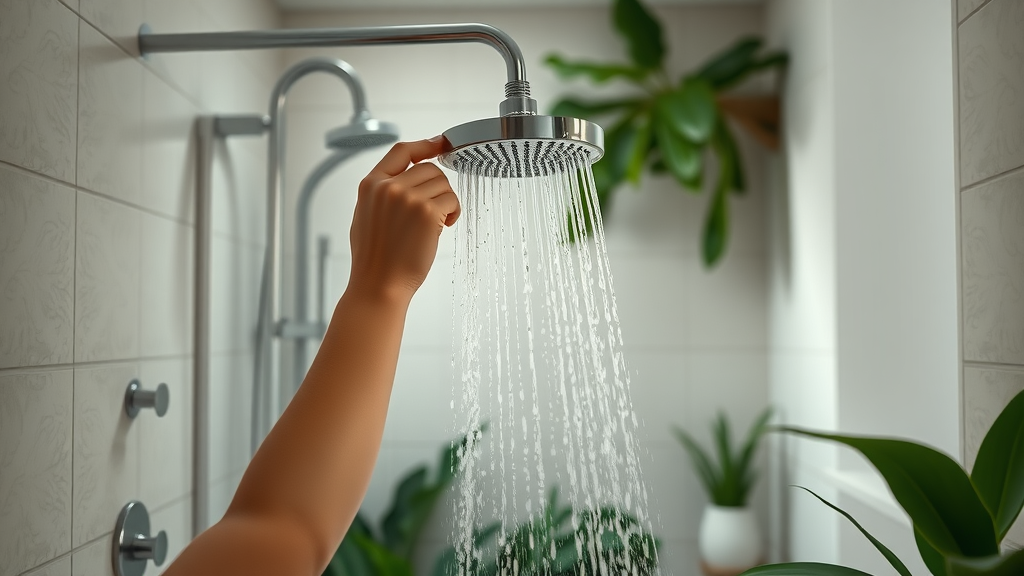

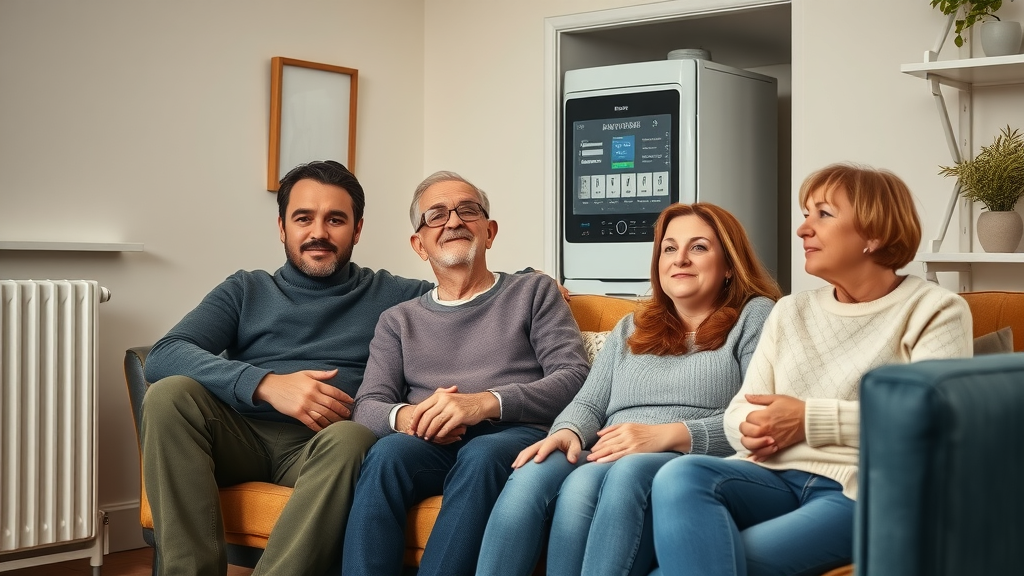
Write A Comment